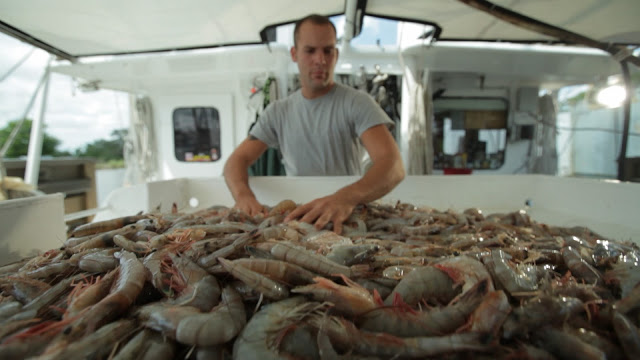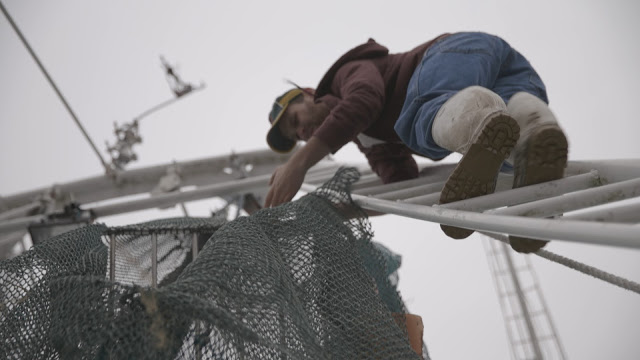In 2010, after the explosion of the Deepwater Horizon oil rig caused 4.9 million barrels of oil to spill into the Gulf of Mexico, BP vowed to clean up the mess for which they were responsible.
 Apart from removing oil from the Gulf, BP allotted money to be used for a PR campaign that would not only clean up their image but would clear up the idea that the Gulf’s seafood was tainted by the spill.
Apart from removing oil from the Gulf, BP allotted money to be used for a PR campaign that would not only clean up their image but would clear up the idea that the Gulf’s seafood was tainted by the spill.
Six years and millions of dollars later, the Louisiana Seafood Board is still working to do just that.
The Louisiana Seafood Promotion and Marketing Board, considered part of the office of tourism, moved to Baton Rouge from New Orleans two years ago. Since their founding in 1984, their goal has been to promote and educate people about Louisiana’s rich abundance of seafood.
According to the agency’s Executive Director Karen Profita, the state is the second largest seafood producer in the nation, right behind Alaska. The challenge Profita and her small team face is that 90 percent of seafood consumed in the United States is imported. Of that 90 percent, less than three percent of it gets tested, she said. And according to recent research that tested imported seafood from local grocery stores, 90 percent contained chemicals banned in the United States.
“There’s a lot more to it than I would have guessed,” she said.
 |
| Photos Courtesy of Louisiana Seafood Promotion & Marketing Board |
Profita said her agency is tasked with ensuring Louisiana’s seafood industry is getting the support it needs. The board is comprised of representatives from the Alligator Industry, the Wild Catfish Industry, the Oyster Task Force, and the Louisiana Shrimp Association, to name a few.
Day to day, Profita plays a role in representing the board members’ interests and working with legislators to come up with compromises that benefit both the fishermen and consumers.
Despite hurricanes and oil spills and rising gas prices that greatly affect their margins, Profita said she is continually impressed and inspired by the state’s shrimpers and oyster farmers and crab fishers.
One of the main challenges for local fishermen is an uneven playing field, Profita said. Imported seafood, mainly from overseas, isn’t required to pass the rigorous inspection or uphold the ethical labor standards domestic seafood producers do. Much of the seafood the United States imports isn’t tested for antibiotics or other banned chemicals, and reports of countries using slave labor to process seafood have increased.
This makes imported seafood cheaper for restaurants and for consumers, often at the cost of the domestic seafood industry.
“We kind of like to get people mad about it,” Profita said. “And it’s important the people in Washington know.”
Their strategy has mainly been one of education so far. Profita explained that educating consumers about the Gulf’s diverse ecology and showing them the superior quality of its seafood is a major part of the approach.
“We know the purity of our product and the safety of it is going to win out,” Profita said.
The Louisiana Seafood board also stresses the seafood industry’s huge economic and cultural impact in the state. One of the many reasons tourists flock to Louisiana is for culinary tourism. And according to Profita, visitors are impressed not only by Louisiana’s seasoning but by the quality of the seafood itself.
Commercial shrimping, crabbing, and fishing are also part of the culture here. Entire communities were founded upon the commercial fishing industry. Any hit the seafood industry takes hurts local fisherman trying to make a living off their catch.
Profita said she often finds herself asking, “How do you preserve that and make sure they can still make a living from that?”
One of the ways the Louisiana Seafood Board tries to preserve this way of life is with their grocery co-marketing program. Their goal is to sell large volumes of seafood to grocery chains across the country to get loyal fans in other markets. If the grocery chain agrees to buy a certain amount of seafood, the board agrees to put 10 percent of the cost of the seafood toward helping the stores market the seafood with things like social media campaigns.
Their co-marketing program has already seen success in a grocery chain in the Northeast, and they’re hoping to continue to grow it across the country.
Profita explained the farm-to-table movement, or in this case, the “dock-to-dish” movement, often overlooks seafood.
“I don’t know why that hasn’t registered with people,” she said. “It’s really fascinating that they’ll spend forever picking out the tomato that goes in the dish and not think about the shrimp they’re putting it on.”
For consumers, Profita said, it boils down to “know better, eat better.”
When purchasing local seafood in grocery stores, Profita said, closely inspect the package. Labels on imported seafood may include an American flag or even a Louisiana name, but they’re not always from the United States or from Louisiana.
Profita also encourages Louisianans to demand domestic seafood in their grocery stores and in restaurants they frequent.
“They’re willing to sell it if they know you’ll buy it,” she said.
This article appeared on BiteandBooze.com, a blog that celebrates the food and beverage culture of Louisiana and chronicles the cultural indulgent experiences of Jay D. Ducote, a chef, writer, speaker, radio personality and Food Network Star Season 11 Runnerup. Each month, BiteandBooze.com’s Uprooted series highlights local chefs, restaurants, organizations, and farmers who are spearheading the farm-to-table and local foodways movements in South Louisiana.
For more on Jay, tune in weekly to the Bite and Booze Radio Show, which airs Saturdays from 3-7 p.m. on Talk 107.3 FM in Baton Rouge. You can follow @Jayducote on Twitter or Instagram as well as his Facebook Page.
